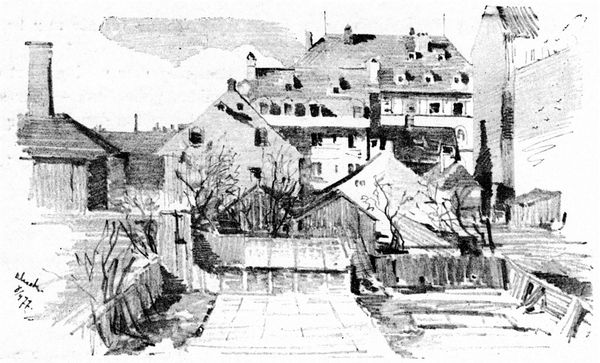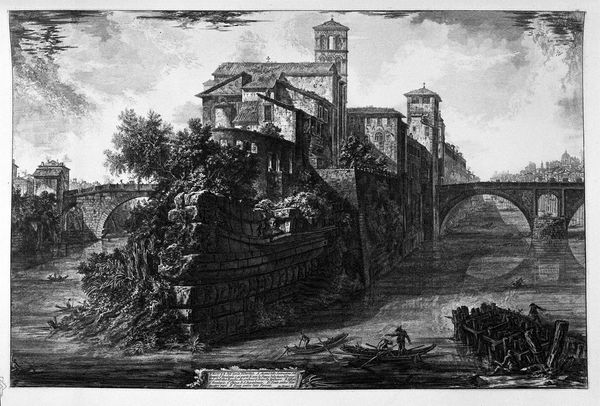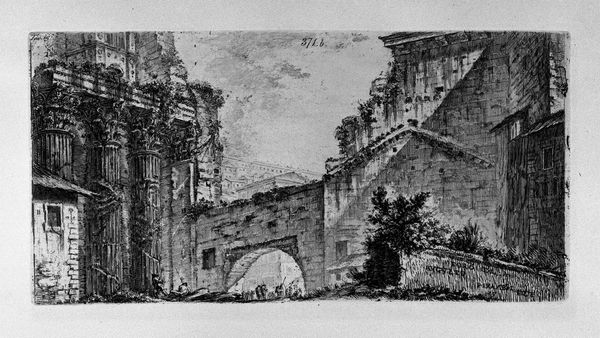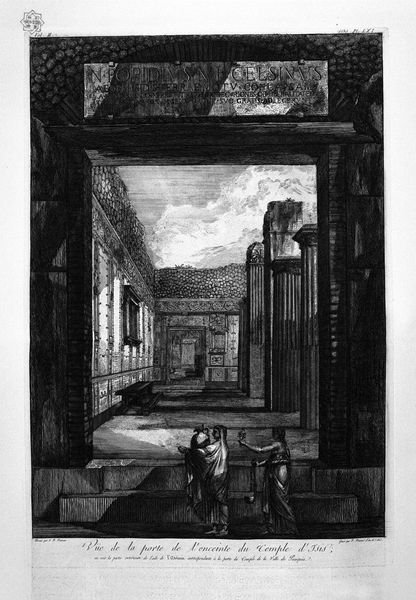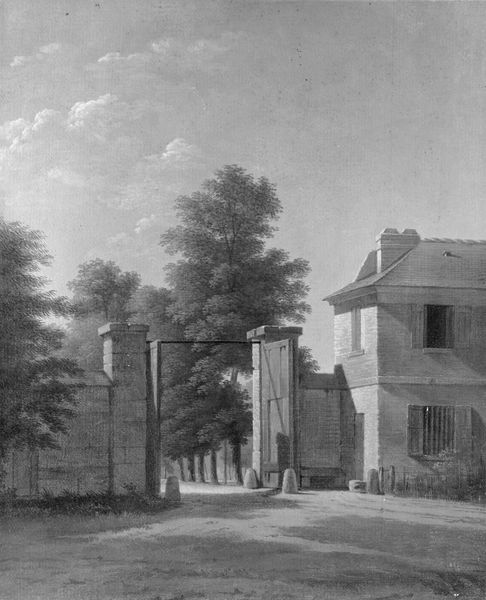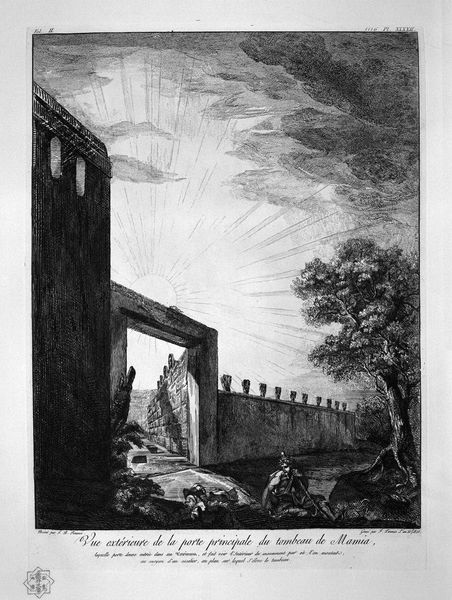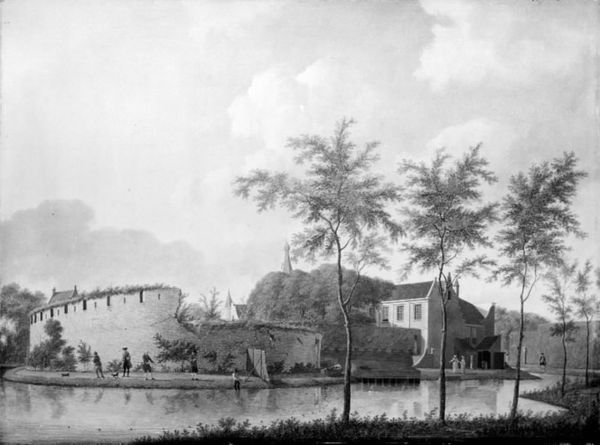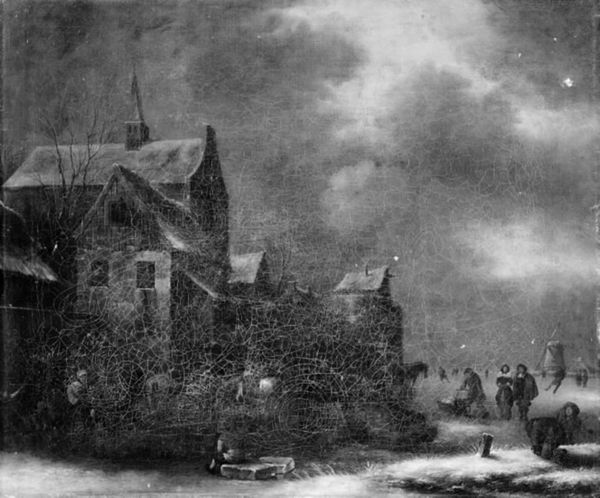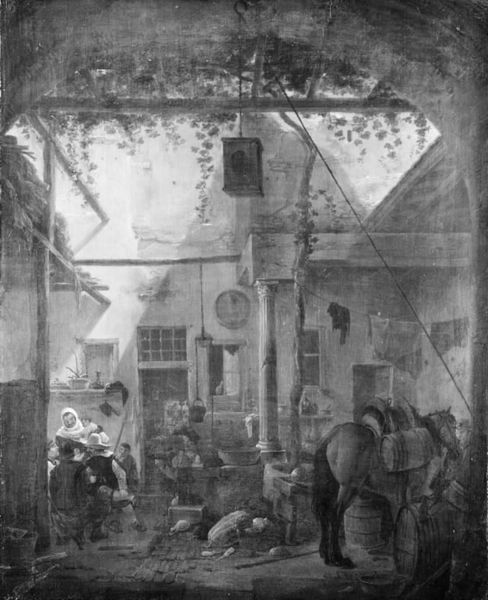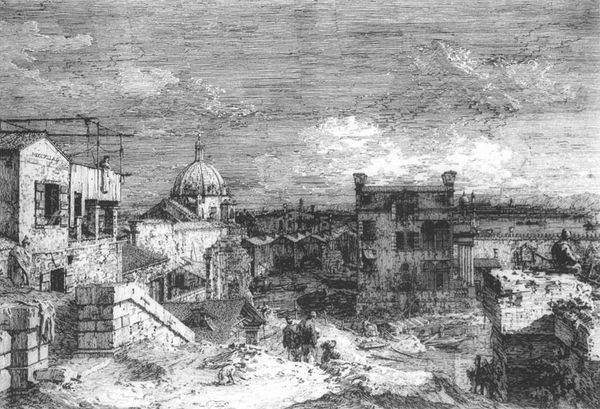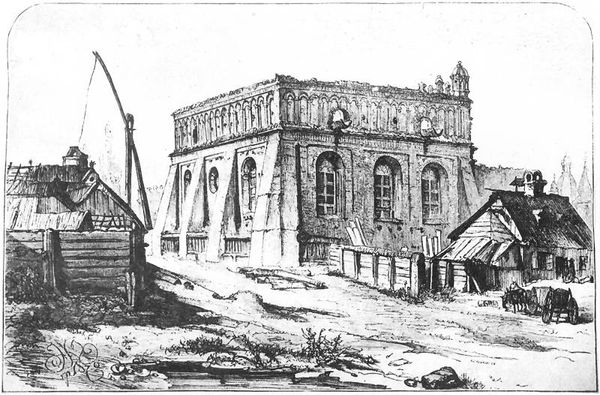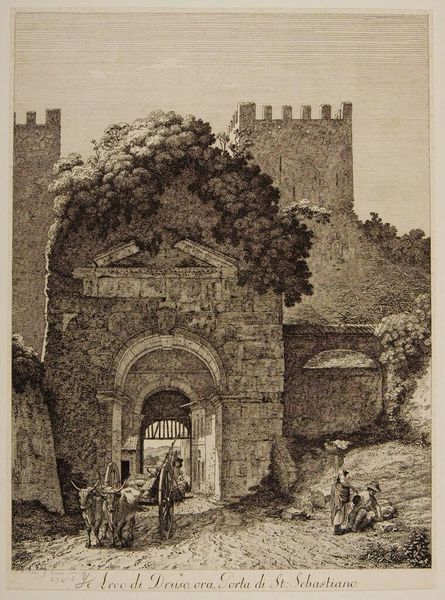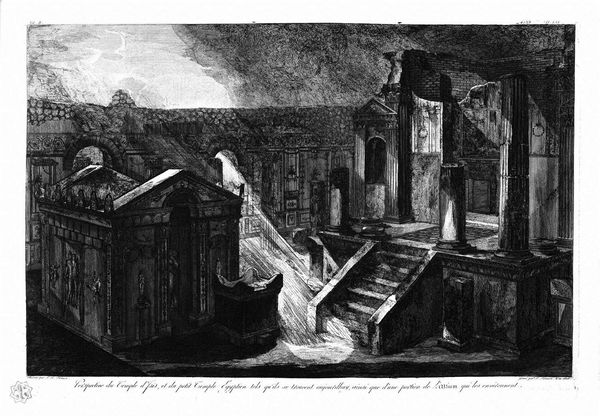
print, engraving, architecture
# print
#
landscape
#
cityscape
#
engraving
#
architecture
Copyright: Public domain
Curator: Let’s consider this print by Canaletto, "Capriccio with a Portico," found in a private collection. The scene is an imagined architectural fantasy, realized as an engraving. Editor: It’s wonderfully moody, isn't it? The stark contrasts and decaying grandeur immediately create a sense of melancholy. There's a tension between the aspiration of classical forms and their ruinous state, it speaks of transience and perhaps lost empires. Curator: Precisely. Canaletto, celebrated for his Venetian cityscapes, frequently combined real and imagined elements. The "capriccio" style itself was an opportunity for social commentary. How do institutions use classical architecture to speak about power and status, for example? Editor: Look at that bizarre cage hanging from the arch. It's unsettling, adding an element of the grotesque to an otherwise classical landscape. Is it a comment on imprisonment? What does that mean if considered intersectionally? Curator: Potentially. He was working in a Venice rife with political tensions, even though overtly these engravings may appear just a lovely decorative scenes, but you're correct—the use of symbols is far more than just decoration. Consider the placement of figures – almost like bystanders, alienated from the space. Editor: They feel trapped by the immensity of it all. It feels a space only designed for the rich and elite. Who benefits from such grandiose imagery? Is this supposed grandeur used to legitimise historical or current social stratifications? Curator: Absolutely. He cleverly positions the viewer to question the reality presented, both aesthetic and political. Art in public spaces, then and now, still serves such purposes of ideological influence. Editor: So true, seeing these works encourages a critical re-examination of these urban spaces as spaces where cultural power continues to shape our perceptions of the present. Curator: Examining how he captures light, and constructs perspective offers fascinating details too, considering this as part of a longer artistic tradition—each stroke intentionally constructed. Editor: Looking closely opens up new readings; the conversation expands, moving from technique to consider broader concerns, a powerful testimony of Canaletto's enduring ability.
Comments
No comments
Be the first to comment and join the conversation on the ultimate creative platform.
